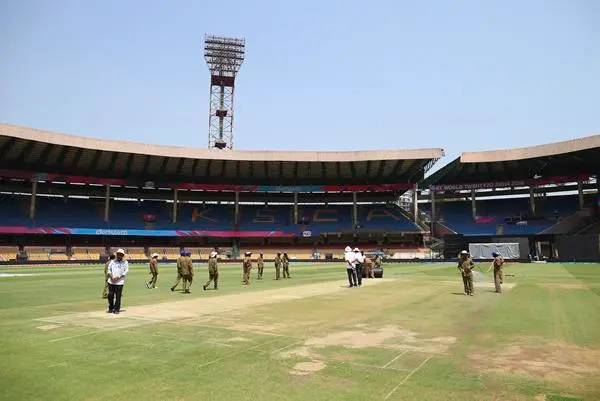Chinnaswamy stadium becomes world's first next-generation outfield to minimize rain delays
View : 709
3 Min Read


It is a proud moment for the Karnataka State Cricket Association (KSCA) as they unveiled the next generation outfield at the iconic Chinnaswamy Stadium in Bengaluru. It became the first ever cricket stadium to have a sub-surface aeration system combined with a vacuum powered drainage system. The new additions will now mean that the drainage system will start working as soon as rain drops fall on the surface of the stadium.
This will thereby reduce the loss of overs in the game due to rain delays. The new system guarantees that the match can be resumed minutes after the rain subsides. The next generation subsurface aeration and the vacuum powered drainage system have been installed by the KSCA with the help of SubAir, USA.
It has an estimated cost of INR 4.25 crore. The new drainage system was unveiled and demonstrated on January 4. The KSCA vice-president, Mr. Sudhakar Rao, was mighty pleased with the new installation at the Chinnaswamy Stadium. He noted that the system will help in the fastest possible resumption of the game.
He quoted, “This is KSCA’s latest project in our constant endeavour to introduce cutting edge technologies in the interest of the game and the fans. Everyone understands that when it rains, it is an act of God. But once it stops raining, it will be inexcusable to delay or cancel a game due to a wet outfield. With this high-tech solution from SubAir, fastest resumption of the game is now possible.”
Talking about the SubAir system, the system is capable of working 36 times faster than the normal drainage by the gravity. As soon as it starts raining, the system gets activated with the sensors and removes any standing water on the surface of the ground. As per the reports in OneIndia, the water gets evacuated at the rate of over 10000 litres per minute from the time it starts raining. Mr. Sanjay Desai from the KSCA said the entire agenda is to improve the fan experience. Moreover, the loss incurred as a result of a washed out game can be minimized using this technique.
He mentioned, “Fan experience is our primary objective. Additionally, there is a risk of Rs. 80-100 crore (US$12-15 million) when a game gets washed out including losses to the paying public, the TV Broadcasters, and advertisers, in-stadia advertisers etc. We believe we have addressed this challenge with the SubAir System.”
However, in order to get the new system installed, the Chinnaswamy stadium had to undergo a renovation. Truckloads of soils were needed, perforated pipes were layered and fine grained sand was added before laying out Bermuda grass on the top surface. The technology is being used on a cricket stadium for the first time. It is a proven and tested formula in other sports like Rugby and Football.
The Senior vice-president of SubAir, Mr. Kevin Crowe remarked, “SubAir has proven itself across various sports like Baseball, Soccer, Rugby, Golf etc. This system is used at some of the best stadiums worldwide including Wembley (UK), New York Mets, Seattle Mariners, BMO Field (Canada), Etihad Stadium (Manchester City) etc., and has over 500 installations. It has also been used for the NFL, 2014 FIFA World Cup (Brazil) and would also be in use in the upcoming FIFA World Cup in Russia (2018).”
Download Our App